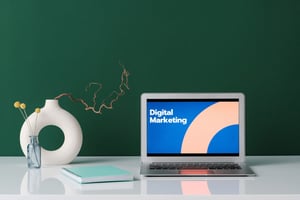
When looking to succeed with your online business, paid media should be an essential part of your inbound marketing strategy. One of the benefits of a successful paid media strategy is that it is forever evolving; you can tweak and optimise where you see fit.
Testing is key throughout your campaign, as you'll want to continuously ensure that you are bringing in new revenue and leads with your paid media plan.
Regardless of whether you're a small company or a large enterprise, this blog will run through the tools needed to implement a successful paid media strategy that's bringing in the results you're after. Let’s run through it here!
What is a Paid Media Strategy?
In regards to what a paid media strategy is, this is a form of marketing that requires investment in order to advertise your product or service on a digital platform. The more you invest in your paid ads strategy, the more digital advertising space you receive.
The most common types of paid media campaigns are found on social media ad platforms. Companies use social media sites such as Facebook, Instagram, TikTok, etc to market their product or service to their target audience. From here, the consumer will decide whether what they require aligns with what your business is offering and then make a key purchasing decision.
An online advertising campaign can also be held on Google, where you’ll pay-per-click and depending on your niche - this will correlate to how expensive your ads will be when gaining a click onto your website.
Impressions, engagement, and conversions are the metrics that you will need to measure during your paid strategy - no matter what digital platform you use. Therefore, improving these metrics is a must if you’re trying to see optimal growth within your business.
The Key Elements to a Successful Paid Media Strategy
Ensuring your marketing campaign is of the highest standard and will entice the average person to invest in your enterprise is challenging. There are a myriad of golden strategies that you can incorporate to promote your brand and that's what we’re going to cover here.
Below, our experts will discuss the key elements of a successful paid media strategy…
1 - Review Your Business and Advertising Benchmarks
Your paid media channel performance will not always be linear, due to the sporadic nature of the market. However, if you’re seeing an upward trend in the long term - you know you’re on the right trajectory.
Reviewing your digital marketing paid media performance will be a great way to assess where your business is at all times. If you make a habit of revising and reviewing your quarterly performance and seeing how the paid media space is changing - this will give you an advantage over your competitors.
If you’re just devising a paid media plan without tracking it, you will lose sight of what is occurring. Therefore, if you keep an eye on trends, metrics and analytics - you will be able to see how your business is performing compared to other businesses in your industry.
From here, you can test your strategies to ensure that you’re staying competitive within your field when it comes to lead generation and brand awareness.
2 - Test All Paid Media Platforms
Often, if you see another business within your sector performing well on one digital media platform, you will automatically look to find success in just that area. You will invest all you can into ad spend and try to reap the rewards as quickly as possible.
Whereas, what you should be doing is looking to be flexible across all platforms, whether that be social media marketing, Google, etc. Although specialists succeed within a business, advertising is all about testing. Forming ad creatives that suit different platforms and viewing the results will give you a good indication of paid media effectiveness.
If you see success with targeting an audience on multiple platforms, note this down and continue to double down on it. Likewise, if testing on a platform isn’t working, this doesn’t mean that this platform doesn’t work - you may just need to tweak your copy, ad visuals, etc. Never stop testing in your field to achieve the best results.
3 - Paid Media Automation
Understanding the power of automation in advertising is essential if you want to compete with other businesses. If other companies in your sector have found a digital marketing automation tool that does something that takes a lot of your time manually - they will be steps ahead.
We recommend that you take a look at the paid media automation tools available and see what works for your business specifically. For example, if Google ads seem to be working well for your company, it is worth looking into a PPC (pay-per-click) bidding automation system to stay ahead of the curve.
Additionally, disregarding the use of AI in marketing would be a disservice to your team. AI can be a massive part of understanding your audience, finding analytics and using them to your advantage.
Of course, before you put all these marketing methods forward, it is important to research the most proficient tools for the job you’re looking to carry out. Anything that can free up time for you and your staff, while they perform at the same level (or higher) will be a massive help to your business's profits.
Final Thoughts
To conclude, seeing success with your paid media strategy requires assessing your current competitors and performance, benchmarking your goals, being flexible with your approach, and utilising AI to your advantage.
If you’re unable to embrace change in the current digital age, you will be left behind. Therefore, by using all inbound marketing has to offer and implementing an effective paid media strategy (with video ads, written ads and any other form of display ads) - you will begin to see a positive change in your performance.
If you’re looking for experts to take a look at your current paid media strategy and suggest how you move forward, don’t hesitate to book a discovery call with our professionals. We’ll be more than happy to assess and walk through how we can restructure your paid media strategy today!




